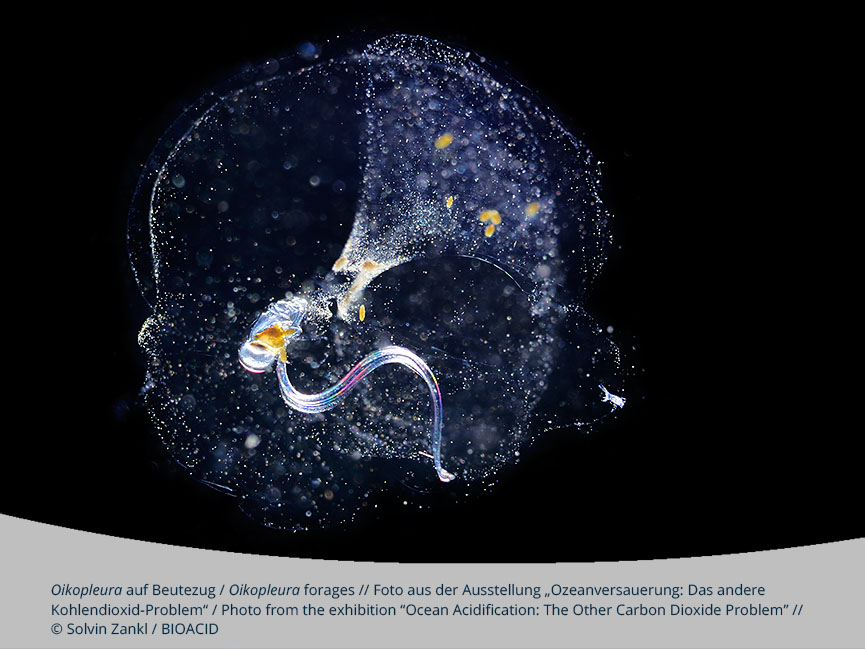An ever-hungry larvacea has cast a net to catch food. Oikopleura dioica is the name of this organism with a body that resembles a tadpole and is up to one millimetre long. Every couple of hours, the greedy jelly creature produces a viscid net from proteins and cellulose, pumps water through it and filters tiny algae, bacteria and protists from it. Old nets are discarded and sink down to the seafloor as “marine snow”, clogged with the leftovers from the phytoplankton feast.
Oikopleura benefits from additional carbon dioxide in seawater or rising water temperature. Under those conditions, larger populations can develop. On the one hand, this might change the planktonic food web massively. But on the other, the “marine snow” sinking down to the seafloor contains carbon and new carbon dioxide can be taken up and digested at the surface.
Photo: Solvin Zankl
